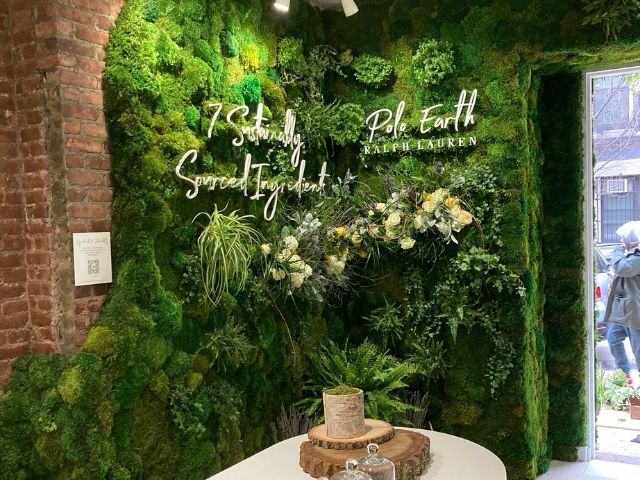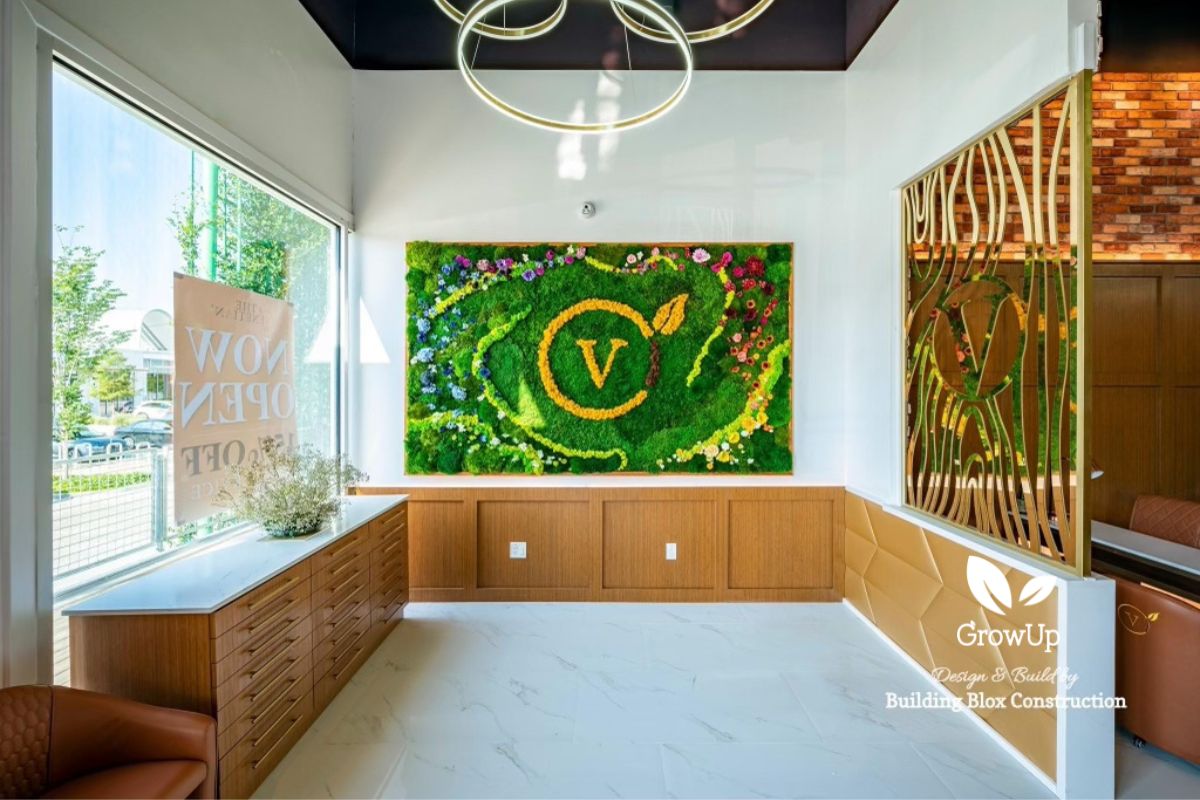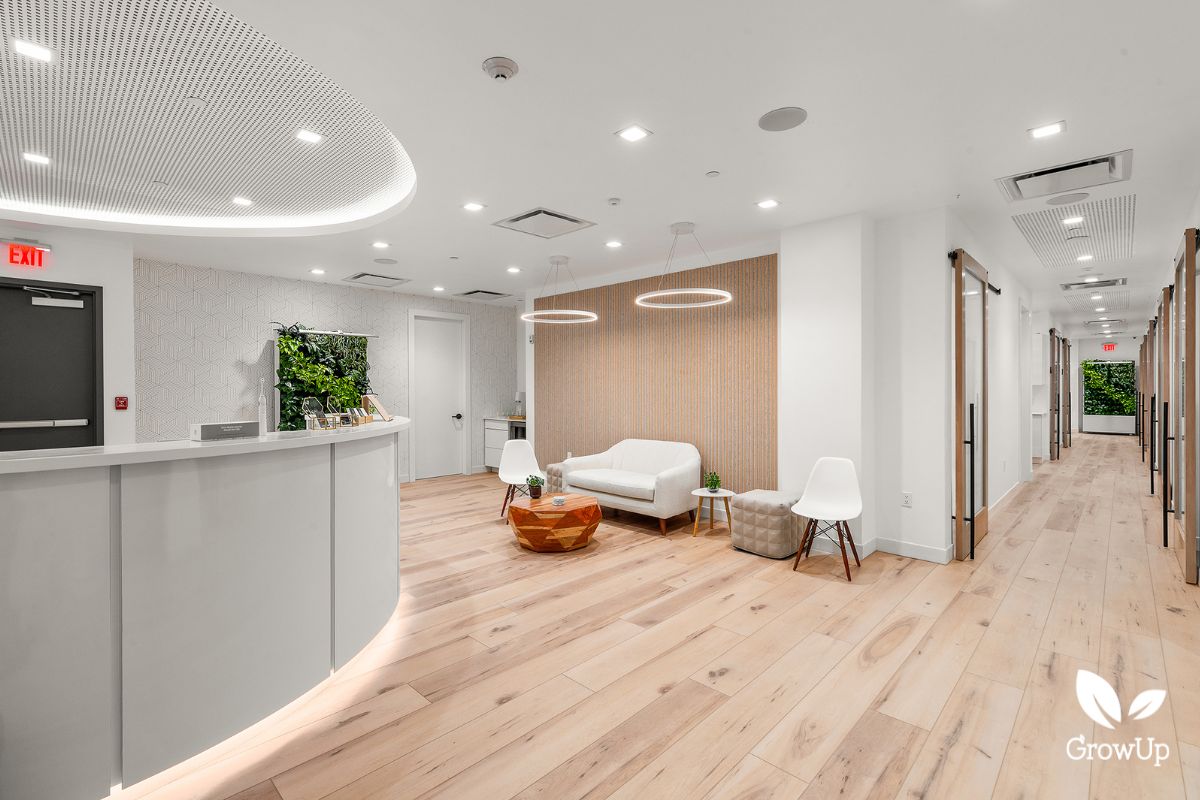People are increasingly spending their money on experiences; on activities that make them feel better rather than on stuff they can own.
As a professional in this space your design and your facility are major contributors to your client’s experience.
From salons and beauty clinics to doctors and dental practices designing your space to enhance your customers experience is essential.
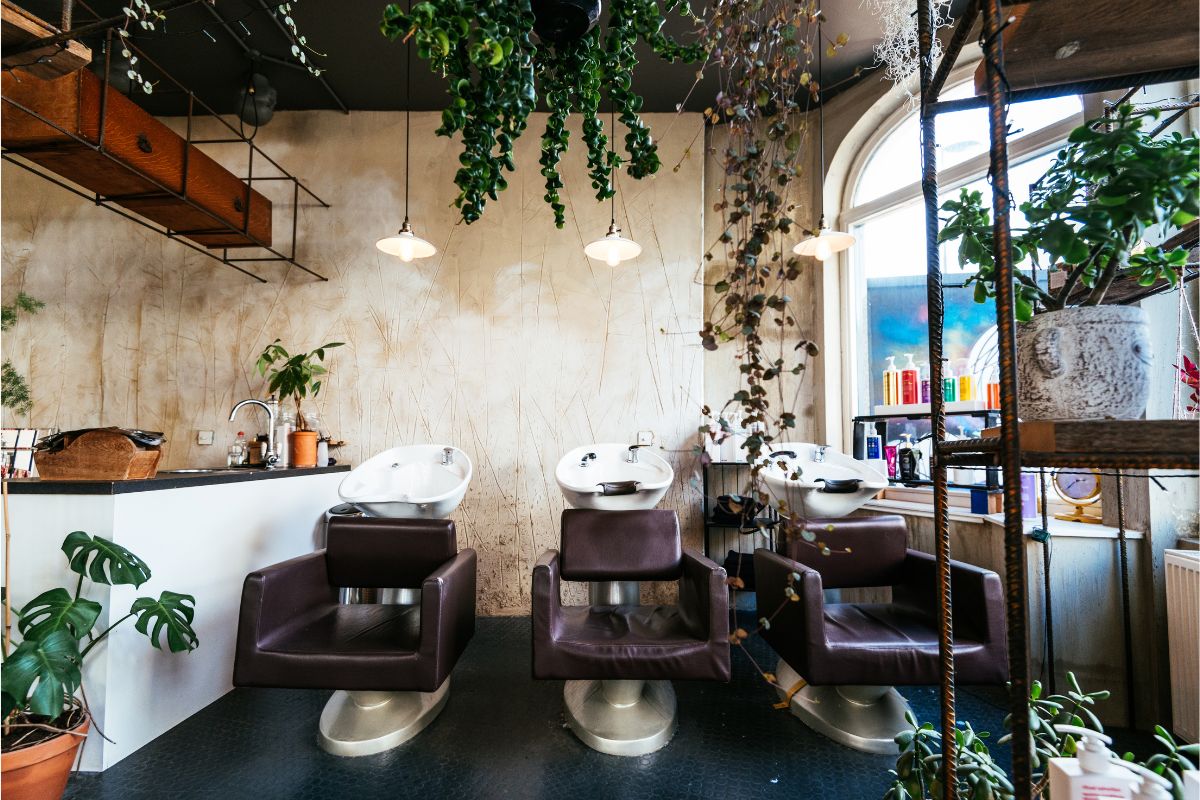
Key Benefits of Biophilia
Reduces Stress
Exposure to nature has been shown to reduce stress and improve mood, which can be beneficial for both staff and clients in a salon or wellness center.
Increased productivity
Studies have shown that people who work in environments with natural elements are more productive and efficient.
Improved Healing
Incorporating natural elements in a medical setting can help create a more calming and soothing environment, which can aid in the healing process.
Sense of Well-Being
Being surrounded by natural elements can improve a person's overall sense of well-being and satisfaction.
The concept of biophilia suggests that humans have an instinctive bond with other living things, and that our well-being is improved by contact with nature and the natural world. Studies have shown that people who have access to nature, or even just views of nature, have lower stress levels, improved mood, and better cognitive function. read more...
Biophilia is a theory that suggests that humans have an innate connection to nature and that being in contact with nature is essential for our physical, mental, and emotional well-being. The term "biophilia" was first introduced by the biologist and philosopher, Edward O. Wilson in the 1980s, who defined it as "the innate tendency to focus on life and lifelike processes."
The concept of biophilia suggests that humans have an instinctive bond with other living things, and that our well-being is improved by contact with nature and the natural world. Studies have shown that people who have access to nature, or even just views of nature, have lower stress levels, improved mood, and better cognitive function.
Biophilia is often incorporated into design and architecture, such as the use of plants, natural light, and other natural materials in indoor spaces to improve the well-being of the occupants. It also includes the use of living walls, moss walls and green roofs as a way to bring nature into the built environment, in order to create a more natural and healthy living and working environment.
Overall, biophilia is an idea that emphasizes the importance of nature in human life, and the potential benefits of incorporating natural elements in design and architecture to promote well-being
Key steps to incorporating biophilia into your space
1. Placement
.jpg)
Entrance/Exit
The moss wall or plant wall creates a beautiful, natural welcoming space. Clients that may be unsure or nervous benefit from the soothing effects of nature, putting them at ease and making them more receptive to new ideas.
These walls are also great branding opportunities and excellent spaces for happy customers to be photographed or take a selfie before leaving.
In treatment areas
Incorporating small biophilic elements throughout the space bring continuity to the biophilic concept and carry the feeling of calm and well being through to the client as well as staff working in the space.
Staff work hard all day and appreciate the extra effort to make their space beautiful. Plants and nature. Studies have shown that people who work in environments with natural elements are more productive and efficient
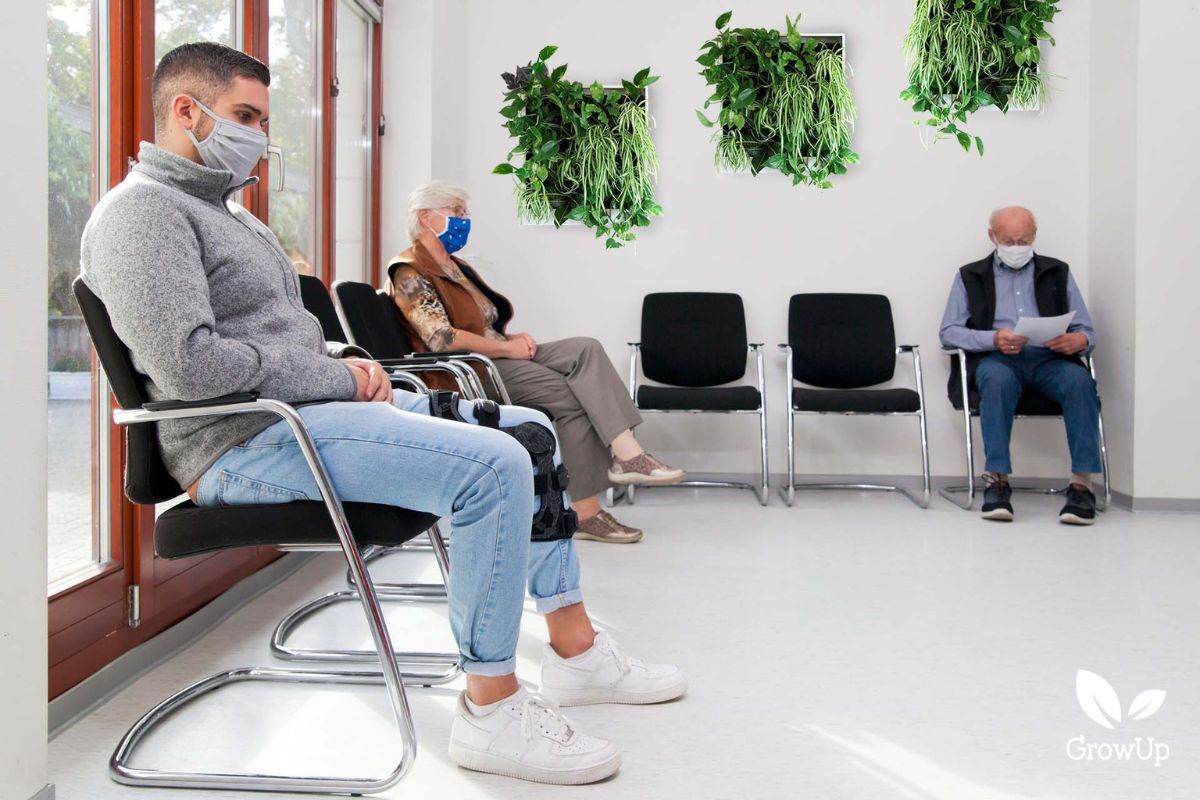
2. Selecting your biophilia solution
Traditionally plants have been used indoors by planting them in a planter that stands on the floor or on a desk or shelf.
Living walls and moss walls (greenwalls) are the most efficient way to incorporate biophilia into indoor spaces. See below for more detail...
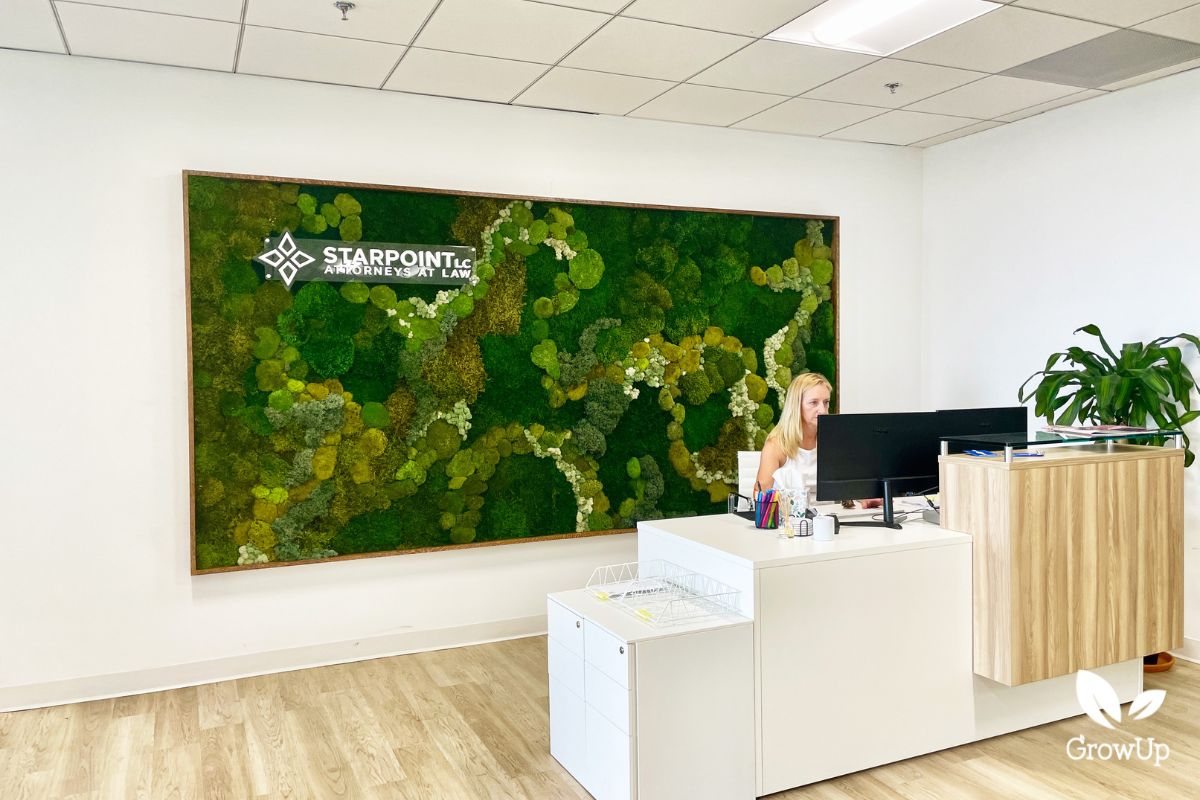
Plant walls provide greenery and natural elements
Living walls and moss walls are made up of plants and moss, which provide natural elements and greenery inside an indoor space. This can help to create a more calming and soothing environment, which can improve mental well-being.
They improve air quality
Plants and moss can help to purify the air by absorbing pollutants, such as volatile organic compounds (VOCs), and releasing oxygen. This can help to improve indoor air quality, which can be especially beneficial in enclosed spaces such as salons and wellness centers.
.jpg)
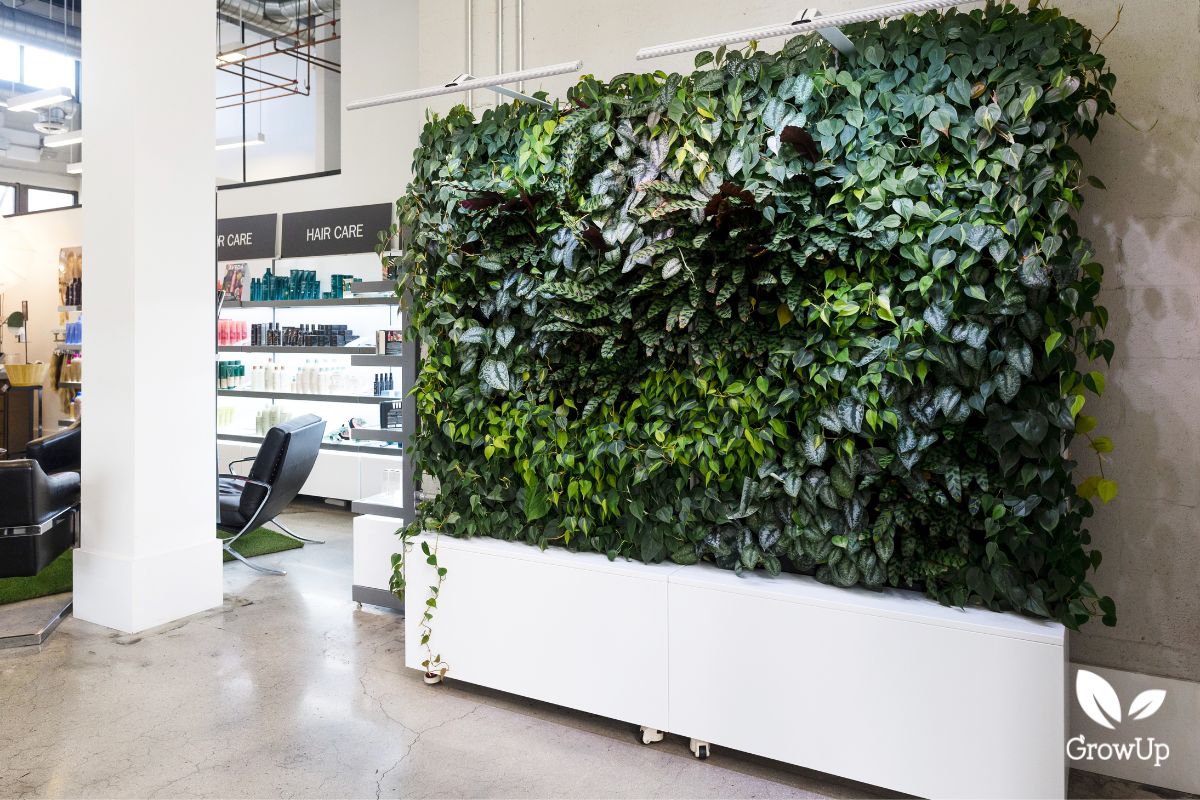
They are visually appealing
Living walls and moss walls are visually appealing and can add aesthetic value to a space. They can be designed to fit the aesthetic of the space and can create a focal point that can be used to create an ambiance.
They are low maintenance
Living walls and moss walls are low maintenance and do not require daily watering. They can be designed to be self-sustaining and can be set up with an irrigation system.
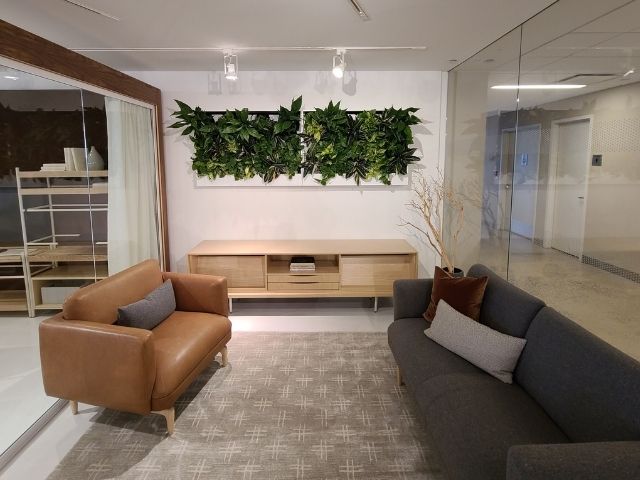
.jpg)
They save space
Living walls and moss walls can be hung on a wall, saving floor space and allowing for the incorporation of nature in small spaces.
Overall, living walls and moss walls are a great way to incorporate biophilia in indoor spaces because they provide natural elements, improve air quality, are visually appealing, low maintenance, and space-saving.
Living walls, moss walls, and faux green walls are all ways to incorporate greenery and natural elements into indoor spaces, but they have some key differences
Living Walls
A living wall is a wall made up of plants that are grown in a vertical or horizontal orientation. The plants are typically grown in a modular system, such as a tray or pocket, which allows for easy maintenance and irrigation. Living walls can be made up of a variety of plant species, and can be designed to fit the aesthetic of the space. A well planned living wall is very low maintenance although it does need some attention on a regular basis.
Moss walls
A moss wall is a wall made up of moss that is preserved and then laid out in a vertical orientation. Moss walls can be made up of a variety of moss species, and can be designed to fit the aesthetic of the space. Moss walls are virtually zero maintenance and do not water. Since they are made from preserved moss they do not require additional lighting or watering and are completely self-sustaining.
Faux Green Walls
Faux Green walls are not made of real plants, but of artificial materials such as silk, plastic, or other synthetic materials. They are made to look like living walls but do not provide the benefits of real plants such as improving air quality, creating oxygen and absorbing pollutants.
Ultimately, the choice between living wall, moss wall and faux wall is down to
design aesthetic required;
maintenance considerations;
budget considerations.
The grand opening went great and everyone loves the wall, it's the main area for our pictures that day.
That is beautiful Grant!! My wife & I are loving this look.
I’m giving your info to the head of ---- in Florida. He’s SO impressed with our units.
We are loving our 2 green walls in our salon!! They’ve been in over a year now and still doing well. We’ve had to replace a few plants here and there but it’s been a nice labor of love that just keeps giving! Our clients love sitting next to them while they get their hair done! Thank you!!

Creating your selfie wall
There is no better marketing for your business than word of mouth.
Clients that are feeling great after the treatment love to show it off and share it with friends. When the opportunity arises to take a selfie a natural beautiful backdrop is a must.
Plants and moss provide a great opportunity for photographs and selfies and if tastefully branded create awesome viral awareness.
Give us a call and we will help you design the perfect selfie wall
